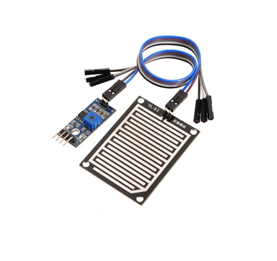RAIN SENSOR
A rain sensor or rain switch is a switching device activated by rainfall. There are two main applications for rain sensors. The first is a water conservation device connected to an automatic irrigation system that causes the system to shut down in the event of rainfall. The second is a device used to protect the interior of an automobile from rain and to support the automatic mode of windscreen wipers. An additional application in professional satellite communications antennas is to trigger a rain blower on the aperture of the antenna feed, to remove water droplets from the mylar cover that keeps pressurized and dry air inside the wave-guides.
Rain sensors for irrigation systems are available in both wireless and hard-wired versions, most employing hygroscopic disks that swell in the presence of rain and shrink back down again as they dry out — an electrical switch is in turn depressed or released by the hygroscopic disk stack, and the rate of drying is typically adjusted by controlling the ventilation reaching the stack. However, some electrical type sensors are also marketed that use tipping bucket or conductance type probes to measure rainfall. Wireless and wired versions both use similar mechanisms to temporarily suspend watering by the irrigation controller — specifically they are connected to the irrigation controller's sensor terminals, or are installed in series with the solenoid valve common circuit such that they prevent the opening of any valves when rain has been sensed.

